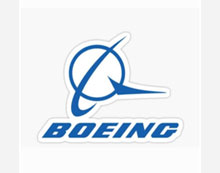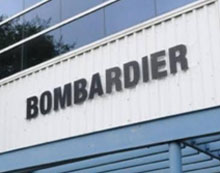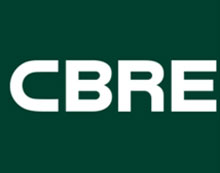High Business Growth
- Home
- High Business Growth
HIGH BUSINESS GROWTH
HIGHER EDUCATION INDUSTRY
_____________
Achieving High Business Growth in Higher Education Industry

Higher Education constitutes universities and colleges. Nowadays, skills development and formal education- both are significant parts of the education system. But, without business growth no higher educational institutions can survive, grow and excel. The following elements involve business growth of educational institutions.
Sources of Income
What are the sources of higher education business? It is not only the tuition fees but it is the outside inflow of money that is important. Students, alumni, outside endowment, corporate chairs, government programmes, institutional initiatives are some of the factors which are to be taken into account. Not only the institutions rely on outside funding but they must learn how to generate money from inside.
Quality development
Without quality no educational institutions survive. Quality standards have to be relevant to academic programmes, people, infrastructure, and events with relevance. Quality assurance has to be visible in its policy documents and vision, mission and goal. Ranking has to be in vision to remain relevant to society, economy and people and academics stakeholders.
The longest established and most influential global rankings are those produced by Quacquarelli Symonds (QS), Times Higher Education (THE) , and Shanghai Ranking Consultancy (the Academic Ranking of World Universities- ARWU).
Infrastructure developments
Beautiful, aesthetic, and relevant environment with cutting edge infrastructure generates competitiveness and advantage. Educational institutions must follow the right and advanced infrastructure with modern technology, clean environment, physical space with innovation and scientific culture. The design aspect has to be given importance adhering to the law of departmental proximity to generate and inculcate innovation.
Academic culture
How to build a right, relevant and innovative academic culture in an educational institute? What are the likes and dislikes? What are the courses? What are the programmes? What are the values? What is the academic system that relates stakeholders’ futures?
Brand development
How to develop the brand of institutions? What shall be the inner development and uniqueness of the system which differentiate from others? Who is to be involved and who is to be not involved? Which values should be given priority and to be engaged successfully?
Global and local connections
The education institutions should be either locally involved or globally involved or it may follow both of these. They have to collaborate with diversified partners or specific partners to generate competitiveness and to be resourceful through programmes and partnerships.
MCGR Services
Your higher education institutions/universities can use our MCGR Services to develop your operational excellence and for business growth.
By this involvement your educational institutions/universities would embrace resilience. sustainability, transition and transformation.
HIGHER EDUCATION BUSINESS GROWTH
Let us ask a few questions on your university business.
Your business growth is important to your university.
Four types of university business growth
Four stages of university business growth
How to grow your university business quickly?
_____________
Let us ask a few questions on your university business.
How can a university business reach the point for expansion and can move additional options to generate more profit?
How can university business understand higher education business lifecycle, industry growth trends, and the owner can move to equity value creation?
Can you achieve 25 percent to 50 percent growth annually?
Does your university have a high gross profit growth rate, students growth, and improved stakeholders retention rate?
Do you continue to focus on investing in innovative curriculum and research, student growth, and expansion into new businesses?
In your university, how far do the business owners, employees and outside factors influence the success of your university business?
Do your university business have the capabilities to scale and expand quickly and efficiently, with the ultimate goal of becoming a major player in the higher education Industry?
Can you identify opportunities for high growth in your university to take advantage of them?
Can your university economy increase quickly in size like the high growth economies of East Asia?
Do you want business growth to be your objective in higher education business?
If you want to get the answer to most of these above questions as yes, then you should call the MCGR office to take your higher education business into new heights. Our representative will meet you by person.
_____________
Your business growth is important to your university.
Business growth is the expansion of the university in terms of growth in revenue, customer base, market share, or producing more services and goods. Your university should be a unique ecosystem. Your increase in revenue, customer base, or market share indicates business expansion.
As a business owner, you need to follow unique growth metrics as your university is unique. Your unique system requires a unique individual approach, a professional touch. If you don’t aim to grow, all your business will suffer. Let’s consider this process in detail.
We’ll start with the most obvious things. You can’t increase your income if you don’t expand your business. You may fix higher prices for your courses but if you’re a new university of three or four years, you need to demonstrate your brand value to your students or stakeholders. To fend off competitors, you should differentiate and provide a strong competitive advantage. So, if that is a challenge for you, setting higher prices may be a complete failure. In this case, consider attracting new target markets or closing more deals.
Students help university businesses grow both directly and indirectly. They can buy more from you or provide you with valuable insights that will allow you to improve. A university that doesn’t invest in regular student attraction, loses its growth opportunities. And here you can get trapped in a vicious circle because students prefer to study or work with constantly evolving universities. So, to close more sales and attract new students, you need to look for growth opportunities.
Universities investing their resources into business development, increase their market share slowly but surely. They outperform their competitors in various spheres which provides them additional perks such as better terms of cooperation with suppliers.
Growing your business affects the quality of student care service as well. Universities investing in their support team, improve after-sales service, which results in a high level of student loyalty, satisfaction and retention. Although university businesses should pay special attention to building relationships with clients since rapid growth and attracting new students sometimes make their loyal clients wait for the answer for hours. This may result in brand switching which is a bad sign for each brand since it’s cheaper to retain an existing customer than to acquire a new one.
In addition, ongoing growth attracts job seekers. Everyone wants to be a part of a big community aimed to develop and create a perfect service. So such universities receive a big number of CVs and can choose the most talented candidates to join their team.
Business growth allows universities to blow up their income, expand their services line, partner with suppliers on the most favourable terms, reach new students and stakeholders, and create a team of professionals.
_____________
Four types of university business growth
University business growth can be classified into four main types. Each type reviews growth from a different perspective and fits businesses at different stages.
Organic university business growth. Organic growth implies physical university business expansion, i.e. upgrading the course lines, producing more services, working in several shifts, large space use, opening a new department front, etc. With this approach, expanding your university business space lets you produce more services, meet the demand, and serve more students, clients, partners and customers.
Strategic university business growth. This approach works well for long-term goals and universities that have gone through organic growth. They invest the money earned during organic growth into strategic growth strategies. This can include expanding the services line and reaching new markets via advertising campaigns.
Internal university business growth. It’s not focused on services but aims to use the current resources more efficiently to optimise the company’s workflow. It can be using a marketing automation system or advanced ideas implementing such as MGCR or saving some costs by implementing lean systems.
Partnership or merge university business growth. As the name suggests, this approach implies cooperation with another university or company for mutual benefits. Such a partnership helps universities launch new services together, produce more services, grow the markets of both and enjoy customer loyalty of another brand.
_____________
Four stages of university business growth
Universities face different challenges at each stage of their development. Startup stage. At the initial stage, the goal of each university is to survive. The university starts from the business owner who finds several employees taking several roles. Their main task is to build university brand recognition and deliver their product value on a tight budget. The main challenges of each university include ensuring that the services of teaching, research and other are competitive and can meet student, client, partner, stakeholder needs and expectations.
Growth stage. At this stage, the university has a business model and does its best to grow. Since scaling a university business scares lots of university entrepreneurs, they often never even risk taking any actions to grow, losing all the opportunities. Although, it’s vital to look for ways to increase the stakeholders base. Still, it seems challenging because the university is limited in funds.
Maturity stage. At this stage, the university business came to certain stability which no longer requires such output from the owner. All the processes have been set and worked well sometimes for years. This stage makes the owners focus on geographical expansion, building worldwide recognition, and product diversification. Despite a more or less stable growth period, maturity requires more cash flows for implementing new university strategies and promotions.
Renewal/decline stage. This is a risky one, however, it may still seem stable to the university owners. They have regular income and university brand awareness and may stop looking for new ways to expand. Hence, if they don’t invest in new ideas and technologies, their business can decay.
Now you uncover above the way each stage of university business functions from the moment it enters the market. MCGR has an in-depth understanding of these stages and your association with us can help you a lot.
_____________
How to grow your university business quickly?
Growing a university business is hard. After reaching some point in expanding your university business, it can be a real challenge to find new ways of building your audience, increasing income, and producing more services.
You can hire talented marketing enthusiasts. Your university team is fundamental to the success of the university since, at the very beginning, a university business owner performs several roles. So, to reduce some workload and deal with more important tasks, you need to find people genuinely interested in your services. Your team may include both experienced specialists and marketing beginners, since the latter may have a great many fresh ideas, the implementation of which will be within the power of experienced employees.
You can analyze your competitors. Consider conducting competitive intelligence research. It will help you uncover university industry trends, get insights into clients’ expectations, predict competitors’ actions, analyse their weaknesses and strengths, and increase your income. This way, you’ll save money and invest in successful university strategies.
You can make use of a customer relationship management system (CRM). With a CRM, you’ll be able to monitor all the customer interactions with your brand at each stage of their buyer journey. You’ll get a clear picture of closed deals and deals in progress. Besides, all the data about your customers will be stored in one place so you can access client cards anytime. It will be easier for your sales reps to contact customers, make personalised offers and work collaboratively. MCGR provides a free CRM system to automate sales and communication with university clients.
You can build a standard online presence. Standard and functional online presence is vital for every university brand nowadays since users spend hours on Facebook, Instagram, and Twitter daily. You can’t miss this chance to build university brand awareness and recognition for free. Demonstrate your services, courses, and programmes that share cases, and testimonials, show some behind-the-scenes of your university, collect clients and students feedback, ask their opinion, post content regularly, run ads, and maintain university brand consistency. This will result in high traffic, increased engagement, and an optimised university marketing strategy.
You can run online and offline events. Webinars, conferences, and workshops help university brands bring in new clients, communicate with the fans of their brand, share expertise and knowledge, collaborate with partners for more university business opportunities, and boost university brand awareness. Consider hosting regular events to grow your business effectively.
Now you know some ideas of university business growth and have some tips on how to scale your university business without much investment. Make use of MCGR Consulting and promotional tools to increase your university income, bring communication with customers, partners, clients and students to the next level, and automate routine processes.
You can communicate to us for advanced ideas, insights, tools, techniques and others to grow your university business.
_____________________________
AUTONOMOUS VEHICLES INDUSTRY
_____________
Factors that Create Market Growth in AV Industry
Software, chips, and electronics will be the core of AV’s architecture, replacing the traditional role of combustion engines. However, the increase of smart components will come with a rise in complexity as well.
Simulation driven design
Future vehicles will be highly complex, cross-domain machines connected to other vehicles and city infrastructure. To develop these complex machines operational excellence management system should move away from traditional methodologies and embrace integrated digital solutions for designing, testing, and engineering on every level, from chip to the city.
Operational excellence management system must branch out and utilise advanced methods for simulating their vehicle programs across all engineering domains to deliver safe and reliable AVs.
Consortium in Autonomous Vehicles

ENSEMBLE is an EU funded project for truck platooning. DAF, Daimler, Iveco, MAN, Scania, and Volvo are the partner of this program. The ENSEMBLE consortium will develop autonomous trucks for vehicle platooning and will demonstrate multi brand truck platooning over the period of next three years.
Driver assistance technology
The driver assistance technology offers adaptive headlights, passive cruise control, lane departure warning, night vision, blind spot detection, and self-parking features. The security features entail remote keyless entry and passive car entry. Autonomous cars enhance comfort by integrating air conditioning, LED lighting, electric windows, rain sensitive wipers, electric seats, power sliding doors, and electric roof. The electrical suspension offers an active as well as passive suspension.
Vehicles Platooning
What are the benefits of vehicle platooning?
Lower fuel consumption
→
Reduce CO2 emissions by up to 10%
Reduction in road congestion
→
Reduction in traffic accident
→
Optimises transportation system by using roads more effectively
→
Reduce up to 30% of total operating costs of a truck
→
Transition from Car ownership to Mobility-as-a-Service (MaaS)
Mobility as- a-Service (MaaS)

As MaaS helps in decongestion of traffic, cost reduction, and efficient travel, the future of mobility services is expected to change rapidly. As the platform is flexible to integrate new modes or products without interfering with the existing service operations, integration of autonomous vehicles is expected to be adopted on a commercial scale thereby increasing car-pooling services, reducing the use of privately-owned autonomous cars.
R&D, investments and development

Waymo LLC, formerly known as the Google Self-Driving Car Project, is an American autonomous driving technology company. It is headquartered in Mountain View, California. It is a subsidiary of Alphabet Inc.
Most services for MaaS will be delivered by the robo-taxi or self-driving taxi, a Level 4 or Level 5 autonomous car operated for on-demand mobility services such as ride hailing and ride sharing. Additionally, autonomous driving technology providers such as Waymo, Uber, and Zoox, among others, are spending an extremely large amount in R&D to develop Level 4 or Level 5 robo-taxis. For instance, Uber invests $125 million to $200 million in a quarter for self-driving vehicle projects.
WAYMO | NViDIA |
TESLA | PONY.AI |
ZOOX | BMW |
_____________________________
AVIATION AND DEFENSE INDUSTRY
__________________
Developing Accountability for High Business Growth in Aviation and Defense Industry
Accountability drives operational excellence. Boeing develops, manufactures and services commercial aeroplanes, defence products and space systems for customers in more than 150 countries.
Visibility
One of the first and most important steps in the Aviation Industry is to gain visibility into the operations.
To achieve operational excellence, aviation manufacturing organisations like Boeing need to find ways to increase their operational efficiency over time, which not only increases their profit margin, but also helps in reducing operational cost and increasing customer satisfaction.

This is a strategy where the business leadership works with its internal employees to focus on innovation and continuous improvement throughout its processes.
Setting a standard

Bombardier is a Canadian business jet manufacturer. Headquartered in Montreal, the company was founded in 1942 by Joseph-Armand Bombardier to market his snowmobiles and became one of the world’s biggest producers of aircraft and trains.
Most of the time, OEE or Overall Equipment Effectiveness, is used to measure progress. This simple formula helps set a standard for developing metrics that can be equally measured.
Consistency in serving customer needs
Textron Aviation Defense designs, builds and supports versatile and globally known military aircraft preferred for training and attack missions. For more than 100 years, it has supported the United States and its partner nations with the current, class-leading aircraft as well as former production aircraft.

Operational excellence of Textron is a continuous process. The goal is to plan for and deliver superior operational performance that anticipates customer needs consistently and effectively, while managing costs and maximizing resources. This process is not just about cost cutting, it is about improving business performance in every conceivable way. This means increasing productivity, reducing time to market, and enhancing quality of products.
Sharing of vital information
Embraer emerged in Brazil, but was created to spread all over the world. This is how it has done it since 1969. It is proud to be the third largest manufacturer of commercial aircraft in the world.


Toward the end of an engagement, permanent boards that reflect the key metrics for that facility are created and clearly represent the most important information that a team must understand, share and process to drive world-class performance.
Adapting to chaotic times
Lockheed Martin is a global security and aerospace company. As a global security and aerospace company, the majority of Lockheed Martin’s business is with the U.S. Department of Defense and U.S. federal government agencies. Lockheed Martin is one of the largest companies in the aerospace, military support, security, and technologies industry. It is a very profitable company. It recorded almost $66 billion of revenue in 2022 and $7.2 billion of segment operating profit, giving it an operating profit margin of 10.9%. Both numbers were down slightly from 2021, when it recorded $67 billion in revenue and $7.3 billion in operating profit.

Businesses must shift their work environment or face unpredictable risks. Lockheed Martin helps you adapt and thrive even in the current chaotic times.
BOEING | TEXTRON |
AIRBUS | EMBRAER |
LOCKHEED MARTIN | BOMBARDIER |
_____________________________
REAL ESTATE INDUSTRY
_____________
An Operational
Business Model for Achieving
High Business Growth in Real Estate
CBRE Group, Inc. is an American commercial real estate services and investment firm. Its mission is to realise the potential of the clients, professionals and partners by building the real estate solutions of the future. From instilling confidence in today’s decisions to re-imagining tomorrow’s spaces, it thrives in complex and ever-changing environments.

In the real estate sector, the demands for transparency and efficiency in management of real estate assets are vigorously increasing. Especially the demands for transparency are being intensified on and on not least by: owners, users, authorities and outside creditors. Real estate businesses must meet these demands and adapt their planning and taxation, management concepts, organisation, outsourcing processes and systems, purchasing strategies and employees, in order to deliver a competitive performance in line with the real estate market. They have to reinforce their competitive factors.
Land intensive industries such as trade, production, transport and logistics also regularly review their real estate strategy and their real estate and infrastructure management in order to improve business growth.
→
Achieving consistent value as well as infrastructure and work in line with market conditions is paramount in order to identify fields of activity in the real estate development of solutions and their implementation.
→
Corporate strategy
Corporate strategy should be towards international growth, digitalization, flexibility, operational excellence, market entry strategies, investment platform strategies.
Portfolio strategy
The portfolio strategy are value-based portfolio and risk management, portfolio and investments strategy, flexible and bundled investments structures, manager selection, optimization of costs and income.
Growth
There shall be strategic and organisational setup, benchmarking, process optimization, lean management, capacity measurement, strategic cost reduction for growth development.
Inhouse and outsourcing
There may be inhouse development or outside outsourcing for purchase strategy, economic growth analyses of make-or-buy, development of performance specifications and service-level-agreements (SLA), selection of manager and partners through structured tendering: e.g. funds manager, administrators, depositories, property manager.
Risk management and compliance
There shall be mechanism for regulatory risk controlling, strategic and tactical opportunities, risk management, reporting, government and compliance, and control systems.

Finance market and monopoly regulation
The company should have knowledge on finance market and monopoly regulation with KAGB, Mifid, EMIR, Solvency II, InvStG identification – strategic and operational implementation of industry regulations in strategy, business and operating model and/or reporting.
Reporting, technology and digitalization
There shall be real estate digitalization strategy, big- and smart-data, business intelligence, process automation, E-Reporting, requirements and selection of systems for property management, technical concepts industry expertise.
Asset / Investment Management
Optimization of real estate processes includes purchase and sale, leasing, data management, controlling etc. for operational excellence or lean management, international location strategy, adjustment of the real net output ratio along the interfaces for external services.
Corporate / Public real estate Management
There shall be management and IT-concepts for areas and infrastructure, control and valuations models (KPIs) for real estates, demand-oriented space utilisation, benchmarking of the costs of real estate and management according to location / property.
Housing Economy Management
Organization of new buildings, portfolio management, maintenance strategy, process optimization and capacity adjustment must be understood in terms of housing economy.
Property and Facility Management

There shall be transparency of the service level and costs in relation to acquisition and purchase, tendering procedure and negotiations, optimization of contracts, and ancillary costs analysis.
A successful real estate company offers comprehensive solutions at global and local levels, and all round expertise in all types of usage such as housing, offices and trade to operational and specialist properties in real estate sector.
→
CBRE | COLLIERS |
JLL | SAVILLS |
CUSHMAN AND WAKEFIELD | ERA |
_____________________________
Our consulting on high business growth is managed by a dedicated team from India.
_____________________________
High growth companies are defined by their ability to scale and expand quickly and efficiently, with the ultimate goal of becoming a major player in their industry.
The major industries in the Indian Economy are Iron and Steel, Textiles, Jute, Sugar, Cement, Paper, Petrochemical, Automobile, Information Technology (IT), and Banking and Insurance.
India’s textiles sector is one of the oldest industries in the Indian economy dating back several centuries. Even today, the textiles sector is one of the largest contributors to India’s exports with approximately 15% of total exports.
Trade In October 2023, the top exports of India were petroleum products ($6.01B), drug formulations, biologicals ($1.93B), pearl, precious and semi precious stones ($1.49B), gold and other precious metals and jewellery ($1.48B), and telecom instruments ($1.44B).
Reliance Industries is the biggest company in India. It has worked in a variety of industries over the years, including telecommunications, petrochemicals, retail, natural resources, and textiles.
Most profitable export products from India are petroleum products, Jewellery,
automobile, machinery, bio-chemicals, and pharmaceuticals.
The size of the higher education market in India stood at nearly six billion U.S. dollars in 2022. The market size is expected to grow at a compound annual growth rate of nearly ten percent between 2023 and 2028 across the country.
AUTONOMOUS VEHICLES |
TOURISM INDUSTRY |
AVIATION INDUSTRY |
REAL ESTATE INDUSTRY |
___________________________
When you think of developing your industry’s business growth, you can contact us to leverage our MCGR consulting team from India. We have both global and local experience to solve your challenges. |

_____________________________
PRACTICE LEADERS
BUSINESS GROWTH

SAN K BADHEI
and Partner
DELHI
Higher Education/University
Hospitals and Medicare
Venture Capital

RAVIKANT PRASAD
and Partner
MUMBAI
Electronics Industries
Textiles
Cement

ROHITASH CHOUDHARY
and Partner
JAIPUR
Healthcare
Life Insurance
Tourism/Medical Tourism

BISWAJIT DAS
and Partner
BANGALORE
Real Estate
Power and Energy
Petrochemical
_____________________________

M P SINGH
DELHI
Information Technology
Logistics and Transportation
Iron and Steel

DEEPAK DUBEY
LUCKNOW
Banking and Private Equity
Retail
Pharmaceuticals

PRADOSH SATPATHY
DELHI
Education
Social Sector
Disaster Management

MANAS ROY
DELHI
Aviation
Automobile
Autonomous Vehicles